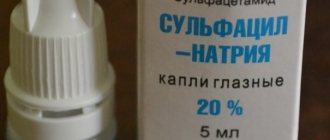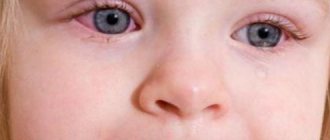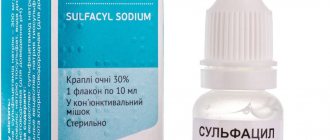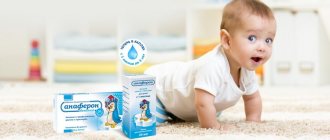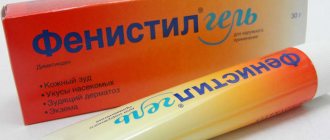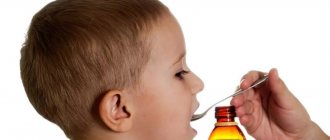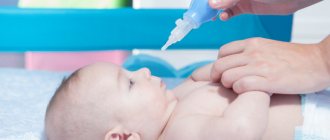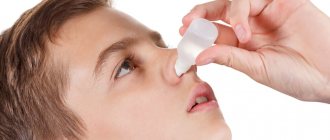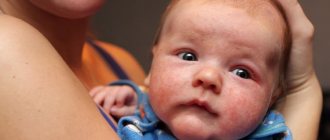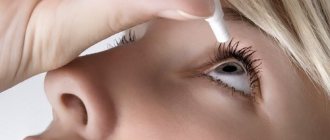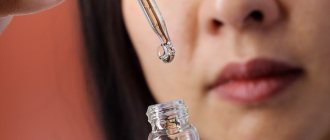Nasal drops with antibiotics for children
A runny nose is a faithful companion to various diseases. Most often viral, but sometimes bacterial. Nasal congestion is also accompanied by all sorts of allergies - to flowers, to pollen, to chemicals.
A runny nose, even its simplest form, is not at all as harmless as it might seem. The inflammatory process in the nose occurs in close proximity to the brain, and at any moment it can become complicated in the most undesirable way. For example, rhinitis pathogens can travel “up” and “down” from the nasal passages. In the first case, this will cause otitis, in the second - pharyngitis or laryngitis. And otitis, in turn, has a chance of developing into meningitis.
Therefore, any treatment must be complete and timely. Will antibiotic nasal drops help prevent unpleasant consequences for children? Let's talk about topical antimicrobials.
Nasal drops with antibiotics
Antibacterial nasal drops actively fight attacking bacteria. These drops can help stop the spread of bacterial infection at the stage of contact with the nasal mucosa. These antibiotic sprays can be used by both adults and children. The bacterial nature of the disease can be determined by yellowish discharge with a thick texture.
The best drugs are Isofra, Bioparox and Polydexa.
Isofra drops contain an aminoglycoside antibiotic. This is the most popular remedy for sinusitis and nasopharyngitis. The drug is available in the form of a spray. The course of treatment is no more than 10 days, 3 times a day. The drug should not be used during pregnancy.
When are they required?
- When the doctor has reason to suspect that a runny nose is of bacterial origin. The surest way to find out is to do a special bacteriological analysis of nasal mucus.
- For rhinitis, especially its purulent form. When there is bacterial inflammation of the nasal mucosa, every doctor knows that this can result in big problems - such a runny nose is complicated quite often and causes pharyngitis, laryngitis, sinusitis, tracheitis, adenitis. In addition, the appearance of pus in the nasal mucus may indicate that the process has become chronic. Antibacterial drops are not a means of prevention; they cannot prevent complications, but they cope quite effectively with the causative agents of the inflammatory process and prevent the further spread of infection.
- For sinusitis. Complex forms of the disease or prolonged sinusitis quite often require treatment with a local antibiotic - alone or in combination.
- With a prolonged runny nose. When no other methods have helped, and nasal congestion has not gone away for more than 1 month.
- For sinusitis.
Thus, antibiotic drops do not need to be given to a child if he has:
- A runny nose that accompanies the influenza virus or ARVI.
- Mild runny nose, without swelling, purulent discharge and increased body temperature to high values (above 38.5-39 degrees).
In the next video, the doctor will talk about when it is necessary to use antibiotic drops and how to choose them correctly.
Types of antibiotics for children
Drugs can be of natural or synthetic origin. It is more convenient for children to give medications in the form of suspensions or tablets, but in especially severe cases injections are also prescribed. Each group of drugs affects certain types of pathogens. Sometimes it is more appropriate to prescribe broad-spectrum antibiotics, although they have many side effects. This happens in the following cases:
- There is no time to determine the causative agent of the disease. If the infection is very severe and spreads quickly, this treatment strategy is used.
- The causative bacteria are resistant to antibiotics with a narrow spectrum of action. If medications have been used before, the body may not respond to their effects.
- There are several causative agents.
Penicillins
Prescribed for acute sinusitis, otitis, tonsillitis, scarlet fever, and skin infections. Penicillin drugs often cause allergies and addiction. Gradually the body stops responding to their influence. However, this category contains the most drugs that can be prescribed from birth. List of drugs of the penicillin group:
- Amoxicillin (from birth to 5 years - in suspension, the dose is selected according to the weight and age of the child);
- Amoxiclav (antibiotic suspension for children over one year old);
- Augmentin (powder for suspensions allowed from birth);
- Ampicillin;
- Flemoxin Solutab (allowed from birth, dosage is calculated by weight);
- Amosin.
Macrolides
Antibiotics of this type are allowed under strict indications. As a rule, they are prescribed for severe pneumonia, exacerbation of chronic tonsillitis, whooping cough, severe sore throat, sinusitis, acute otitis media from three months. They do not kill bacteria, but prevent their action. Macrolide group drugs:
- Azithromycin;
- Chemomycin;
- Azitral;
- Sumamed ordinary and Forte;
- Azitrox;
- Zitrolide;
- Azicide;
- Zetamax;
- Azimed;
- Erythromycin;
- Clarithromycin;
- Ecositrin;
- Ormax;
- Clubax;
- Fromilid;
- Klacid;
- Macropen;
- Rulid.
Cephalosporin antibiotics for children
Drugs in this group are prescribed for severe and acute infections. They are semi-synthetic, have a gentler effect on the body than penicillins, very rarely cause allergies and are considered more effective. Cephalosporin drugs that are allowed to be prescribed to children:
- Cefixime (suspension is given from six months, and capsules are given to older adolescents, from 12 years);
- Cefotaxime;
- Pantsef;
- Zinnat;
- Cefuroxime;
- Axetil;
- Ceftriaxone;
- Zinacef (helps with respiratory infections, meningitis, joint diseases, available in powder form for injection)
- Ceforal Solutab;
- Suprax (a third-generation cephalosporin drug, produced in granules for making suspensions, approved for six months);
- Cephalexin.
Tetracyclines
Drugs in this group are effective against many bacteria and some fungi. The most common drugs:
Aminoglycosides
Universal drugs that are resistant not only to bacteria, but also to other antibiotics. Prescribed for the treatment of infections of the genitourinary tract and respiratory organs. List of drugs:
Quinols
Drugs in this group are very strong, so they are not prescribed to children under 18 years of age. Among the many side effects, it is worth highlighting that fluoroquinols disrupt the formation of cartilage. List of drugs in this group:
- Ofloxacin;
- Tarivid;
- Zanotsin;
- Zoflox;
- Avelox;
- Ciprofloxacin;
- Ecotsifol;
- Cyprinol;
- Tsifran;
- Ciprobay;
- Tsipromed;
- Tsiprolet;
- Levofloxacin;
- Eleflox;
- Levolet;
- Ecolevid;
- Glevo;
- Hyleflox;
- Lefoccin;
- Floracid;
- Flexid;
- Tavanik.
Advantages and disadvantages
The undoubted advantage of this dosage form over systemic tablets, injections and capsules is that the medicine immediately gets to where it is needed - to the site of the inflammatory process. This means it starts working immediately. Since the drug does not pass through the stomach and intestines, the likelihood of developing dysbiosis associated with taking antibiotics is significantly reduced.
The disadvantage of such drugs is the relatively small dosage of the active substance. Antimicrobial drugs in drops and sprays defeat mild stages of the disease without difficulty, but more complex stages of ENT diseases cannot be overcome with local drugs alone. And sometimes the doctor prescribes drops in addition to systemic antibiotic treatment, i.e. taking pills or injections will take place in parallel with instillation into the nose.
Nasal medications
- "Bioparox". I want to start the review of names with this drug, because its history is quite instructive for those who like to treat everything with antibiotics. This antimicrobial spray was so popular that manufacturers were forced... to discontinue it. Why? Yes, because the uncontrolled use of the drug, its affordable price and over-the-counter availability from pharmacies led to the fact that both adults and children sprayed Bioparox when necessary and when not necessary. The drug is now found to be ineffective against most microbes.
That is, existing bacteria and bacilli have developed a strong immunity against the drug. On this sad note, the story of one of the best children's antibiotics in history ended.
- "Polydex Spray". Two antibiotics at once in this drug effectively resist most gram-positive and gram-negative bacteria. The spray is recommended for children who are already 2.5 years old and children older than this age. The medicine is given for rhinitis, nasopharyngitis, sinusitis. Contraindicated in children with kidney disease.
- "Isofra". This is a nasal spray, erroneously called "drops". An antimicrobial drug is indicated for various diseases of the upper respiratory tract. The medicine can be taken by children at any age, but not more than a week. If there is no effect, you need to stop spraying Isofra into your nose. The list of contraindications is limited only to allergies to framycetin.
For babies up to one year old
Before prescribing a specific drug, the doctor must conduct a diagnosis. In addition, antibacterial therapy is different for children of a certain age. Let's consider which antibiotics are allowed for the treatment of cough in patients under one year of age. Here is the list and names:
Amoxicillin. This drug belongs to the group of penicillins, which have a wide spectrum of action. Used for coughs caused by pneumonia, pharyngitis, otitis media. Produced for children up to one year in the form of granules for syrup. They must be dissolved in boiled water. For such babies, the dosage is ¼ dessert spoon. You can read about the application here.
You can buy an antibiotic at a pharmacy for 150 rubles.
Augmentin. This drug is available in powder form for suspension. Due to the presence of acid in the composition, Augmentin has a wide range of effects and is used for prolonged coughing. It is used in the treatment of the same diseases as Amoxicillin. It should not be given to children under 3 months of age, otherwise it may cause allergies.
The cost of the drug is 250 rubles.
Zinatsef. This antibiotic belongs to the group of 2nd generation cephalosporins. It has a wide range of effects and is indicated for pneumonia, frontal sinusitis, and sinusitis. It is used only in the form of injections. Children are prescribed a dosage of 30-100 mg, taking into account their weight. To perform an injection, you must first dilute the medicine with water.
You can purchase the drug for 130 rubles.
Zinnat. This drug is produced in the form of granules for the preparation of a suspension. Indicated for ailments of the upper and lower respiratory tract, ENT organs. Should not be given to patients under 3 months of age. There are 10 mg of the drug per 1 kg of baby’s weight. The baby should take the medicine 2 times a day.
"Complex" drops
These are drops containing more than two medicinal components. They are prescribed by doctors and made by pharmacists in pharmacies with a prescription department. Of course, there are few such pharmacies left, but they exist in every city. The composition of complex drops is also determined by the doctor. Most often they come with antibiotics, antiviral drugs, hormonal agents, and herbal ingredients.
Antihistamines that relieve allergy symptoms, as well as anti-inflammatory and painkillers are often added to complex drops. The most common components of complex drops are “Protargol”, “Interferon”, “Fluimucil”, “Levomycetin”, etc.
Complex drops should be stored exclusively in the refrigerator; shelf life is from 5 to 15 days. On the Internet you can now find quite a lot of advice on how to dilute complex drops yourself, and even detailed recipes are provided. But you shouldn’t do this for two reasons:
- Firstly, you cannot know exactly what components your child needs now, for a specific infection, and you can make things worse by instilling an antibiotic for viral rhinitis or a herbal preparation for an allergic rhinitis.
- Secondly, it is impossible to calculate microdoses of components with pharmacy precision at home. And taking, on the advice of virtual “gurus,” an ampoule of one drug and half a tablespoon of another is not only an unscientific approach, but also a criminal one. Such negligence can cost you and your baby dearly.
How to use?
- According to the scheme. Antibiotic drops are usually prescribed for a course of treatment, the duration of which must be determined by the doctor. Antimicrobial drugs should be taken several times a day at regular intervals. This is important because each antibiotic has its own time of action, and when it ends, a new dose of the drug must enter the sick child’s body to fight microbes.
- With preliminary preparation. Before using the drops, the nasal cavity should be rinsed with a soda or saline solution; a solution of furatsilin or sea salt (Aquamaris, Aqualor) is also suitable. For purulent rhinitis and sinusitis, the use of an antiseptic in the nose, for example Miramistin, is encouraged. After rinsing, you need to wait about half an hour, instill vasoconstrictor drops (Vibrocil) to relieve swelling and “open” the nasal passages, and only then start instilling antibiotic drops.
All drops should be above room temperature; you can simply warm the bottle of medicine in your hand before use.
Antibiotics for children 2 years old with a runny nose
Antibiotics for severe coughs in children quickly destroy the microbial flora, which leads to the disappearance of many symptoms of acute respiratory infections - sore throat, discomfort when swallowing, fever. But in order to achieve recovery, you need to follow medical recommendations.
General rules for antibacterial therapy:
- Only a doctor can choose the appropriate drug; improper treatment is dangerous for bacteria to develop resistance to the antibiotic;
- antimicrobial drugs can be given to the child only at regular intervals - once every 8, 12 or 24 hours;
- the minimum course of therapy is 5 days;
- antibiotics should not be taken for more than 2 weeks, as this is dangerous due to decreased immunity and mucosal candidiasis;
- During treatment, you need to drink probiotics to prevent disruption of intestinal microflora.
Rules for inhalation therapy:
- The session is scheduled 1.5 hours after eating;
- if the bronchi, trachea and lungs are affected, the aerosol is inhaled and exhaled through the mouth;
- in case of inflammation of the nasopharynx, breathe superficially only through the nose;
- do not take mucolytic medications within 1.5 hours after inhalation;
- half an hour after the procedure, do not go outside and do not eat food.
Antibiotics are a separate group of medications that are used to destroy microbial flora. They are used to combat cough only in the case of a bacterial infection, represented by staphylococci, Pseudomonas aeruginosa, pneumococci, streptococci and other pathogens.
For children under 1 year
The nasal passages in infants are known to be quite narrow. The mucous membranes are loose, and the ENT organs are fully formed. All of these are additional provoking factors for the emergence and development of inflammatory processes. The anatomical features of the structure of the nose and its sinuses in babies also complicate the treatment process.
Before introducing drops into the nose, the baby needs to rinse the cavity and remove mucus from the nose with a special aspirator. The baby should instill drops with his head turned slightly to one side.
“Vibrocil” or “Nazol Baby” are suitable as vasoconstrictor drugs for the baby.
What do you need to remember?
- Antibiotic drops can only be prescribed by a doctor.
- You cannot cancel instillation on your own, even if improvement occurs.
- Do not use two or more types of antibiotic drops or sprays at the same time.
- Using drops and sprays with antimicrobial components for too long can cause nosebleeds - if there are changes in atmospheric pressure, a child may experience nosebleeds.
- If the dosage and course of treatment are not followed, the bacteria may become resistant to the antibiotic, and the next time this drug cannot be used. The child will have to find a new medicine, more potent and probably more expensive.
- With frequent instillation of antimicrobial drops, a child may develop an allergic reaction.
- Side effects of taking antibiotic nasal drops and sprays may include anemia, loss of appetite, discoloration of the child’s tooth enamel, attacks of nausea and stool upset. Be careful!
In the next video, Dr. Komarovsky will talk about whether it is worth taking antibiotic drops for children and in what cases.
medical reviewer, psychosomatics specialist, mother of 4 children
Source
Treatment of rhinitis
Rhinitis is an inflammatory process of the nasal mucosa, accompanied by the release of mucus from the nasal passages. In most cases, it is not an independent disease, but an accompanying symptom.
Medicines for the treatment of runny nose in children are presented in drops, sprays, ointments, capsules and tablets.
Drugs for the treatment of rhinitis are divided into four main groups according to their therapeutic effect on the child’s body - vasoconstrictors, antiviral, antibacterial and antihistamine. Homeopathic medicines are a separate group.
Let's take a closer look at each of the groups.
Vasoconstrictor drugs
Medicines with a vasoconstrictor effect are recognized as the most effective in the treatment of children's runny nose. This is primarily due to the rapid restoration of free breathing. Using these medications, you can achieve the following therapeutic effects:
- reducing swelling of the nasal mucosa;
- a significant reduction in the amount of mucus secreted from the nasal passages.
All vasoconstrictor drugs have similar methods of action; their difference lies in the active substance, which serves as the basis of a particular drug.
In pharmaceuticals, they are divided into three groups, based on the composition of the active substance:
- "Xylometazoline" - the effectiveness is more than six hours.
- "Oxymetazoline" - duration of action up to twelve hours.
- "Naphazoline" - act for four hours.
Drugs in this group are taken for no more than five to seven days, as they can cause addiction.
For adults
Antimicrobial and antibacterial medications are actively used to combat illness, the cause of which is damage to the body by bacteria and other pathogenic microorganisms
But no one pays attention to the fact that they are completely useless in the case of a viral disease
When an adult suffers from a cough and runny nose, a rise in temperature, and a headache, all this indicates the presence of a virus in the body. The causes of this disease may include a huge number of influenza viruses, respiratory syncytial infection.
If symptoms of the disease such as runny nose and cough cannot be eliminated without antibiotics, you need to know the rules for taking these medications:
- Adults should take their appointments strictly by the hour. Thanks to a clearly drawn up schedule, it is possible to create the desired concentration of the main component in the blood, upon reaching which all bacteria die. When the patient for some reason does not take the drug on time, the concentration of the antibiotic in the plasma decreases. Such treatment will not give the desired effect, and may even provoke the development of bacterial resistance to the antibiotic used.
- Improvement after taking an antibacterial drug occurs in the near future. But this effect can be achieved only if the antibiotic for cough and runny nose was chosen correctly. Positive dynamics develop very quickly and consist of the following: the patient’s nasal congestion disappears, the amount of mucus released from the nose decreases, a dry or productive cough goes away, the intensity of chest pain decreases, and breathing becomes easier. If relief has not occurred after 2 days, the antibiotic should be stopped. This indicates that the drug is not suitable for you, therefore, it should be changed. Many patients believe that by increasing the dosage they will be able to achieve a positive result. But this statement is false, since in the end they can earn various side effects, thereby aggravating their condition.
- Taking antibacterial drugs in adults to combat cough and runny nose should last for the time specified by the doctor. As a rule, the course does not last more than a week. If after some time the patient feels unwell, then antibiotic therapy can be continued, otherwise all the symptoms will return again.
For coughs, adults may be prescribed the following antibiotics:
To eliminate a runny nose, it is advisable to use the following medications:
- Erythromycin;
- Clarithromycin;
- Azithromycin (instructions for using Azithromycin for sore throat can be found here);
- Spiramycin;
- Midecamycin.
Antiviral drugs
These drugs are used not only in the treatment of rhinitis in children, but also for preventive purposes. Their use is relevant during the epidemiological period, since antiviral drugs can suppress viral infection and eliminate the causes of the disease.
The form of release of medicines is quite diverse. This:
- nasal drops;
- capsules;
- rectal suppositories;
- pills;
- ointments.
Under no circumstances should you administer an antiviral drug to a child yourself. A doctor must diagnose a viral disease.
The entire list of antiviral drugs and methods of their use by age is in this material.
Antibacterial agents
The pharmacological group of drugs with antibacterial action is based on the active substance antibiotic. In most cases these are nasal sprays. This form of release is the most convenient and practical; it has the following advantages:
- ease of use;
- uniform distribution of medication in the nasal passages;
- penetration of the drug into the paranasal sinuses;
- the antibiotic has a therapeutic effect without entering the hematopoietic system.
Antibacterial drugs used to treat runny nose in children are complex drugs.
These medications are prescribed by the attending physician and are used strictly according to the regimen specified by him.
- How to treat colds in children under one year of age - an article that will answer many questions about runny nose, cough and other cold symptoms.
- Causes and treatment of prolonged rhinitis in children - your baby has suffered, it’s time to treat!
- A runny nose at 1 year old is not a problem for a baby, read the article, be forewarned and forearmed.
Rules for taking antibiotics for coughs in children
The pharmacokinetics and pharmacodynamics of antibiotics have significant differences at different age periods: up to 4 weeks, up to a year, from a year to three to five years. The choice of the type and form of the drug requires increased caution, especially in newborns and young children, due to:
- lower rate of absorption of substances in the gastrointestinal tract;
- low muscle mass, which affects the rate of absorption of drugs when administered intramuscularly;
- easy penetration of substances through the skin, which can lead to severe poisoning;
- metabolic features, slow maturation of receptor systems;
- higher volume of distribution due to increased fluid content in the body;
- decreased renal function, as a result of which the elimination of drugs occurs less intensively.
Despite the slight difference between clinical and pharmacological parameters in children over five years of age and adults, pediatricians prescribe various drugs to children of this age with caution. This approach is associated with a reduction in the risk of developing possible complications due to insufficient knowledge of certain aspects of pharmacology in children
Antibiotics intended for young patients are used in a variety of forms: sprays, suspensions, tablets, each of which has a different effect on pharmacokinetics. The selection of the necessary antibacterial agent is made taking into account age, medical history, infectious pathogen, and resistance to the drug of choice. Treatment can be carried out either with one drug (monotherapy) or with various combinations of antibiotics.
To prevent the development of resistance of microorganisms to the effects of the drug, as well as to obtain the best effect from treatment, therapy must be carried out following certain rules:
- exclusion of uncontrolled and/or unjustified use.
- Compliance with the prescribed dosage regimen and duration of the treatment course.
- Use of maximum doses of antibiotic, and the dosage can be reduced only in consultation with the attending physician.
- Replace the drug if further treatment is necessary.
Source
Antihistamines
Among all medications used in the treatment of runny nose in children, antihistamines are placed in a separate group. Unfortunately, it is not always possible to immediately determine the irritating factor that provokes allergic rhinitis. In these cases, antihistamines are used, which are available in the form of nasal drops, tablets and aerosols (sprays). They have a combined effect, namely:
- promote vasoconstriction;
- relieve swelling of the nasal mucosa;
- have anti-inflammatory and antibacterial effects.
Antibiotics in tablet form
Antimicrobial drugs used in pediatric practice also include antibacterial agents in the form of tablets. Most often they are prescribed to children of preschool and school age, when taking an antibiotic of this form no longer causes difficulties.
Flemoxinsolutab
Flemoxin is effective against most microorganisms, accumulates well in the sinuses and sputum, therefore it is used to treat acute sinusitis and bronchopneumonia. Easily absorbed when administered orally and does not require simultaneous consumption with food. The tablets have a pleasant fruity taste, which plays an important role when using the drug in children. If necessary, the product is well dissolved in water to form a suspension.
Homeopathic medicines
The pharmacological group of homeopathic medicines is widely used in the treatment of children's runny nose. It has a wide range of effects on the disease, including:
- elimination of swelling of the nasal cavity;
- fight against viruses;
- stimulation of the immune system;
- relieving inflammatory processes.
The advantage of using homeopathy drugs in the treatment of childhood rhinitis is that they are completely natural. The medicines do not contain “chemicals”, which makes it possible to avoid allergic manifestations when taking them.
A homeopathic medicine is prescribed by a homeopathic doctor after a complete medical examination of the child. The medicine is taken according to a strict schedule. Self-medication is unacceptable.
Top 10 drugs
"Xymelin"
This spray has an effective vasoconstrictor effect, reduces swelling of the nasal mucosa, and helps normalize breathing a few minutes after use. Maintains effectiveness for twelve hours.
The drug is prescribed to children for the treatment of runny nose caused by:
- cold;
- infectious disease;
- viral infection.
The drug "Xymelin spray" is produced in the following dosages:
- 0.1% - prescribed to children over six years of age;
- 0.05% - used in the treatment of children from two years of age.
Use this spray for runny nose for children no more than twice a day:
- perform one injection into each nasal passage.
The duration of treatment should not exceed seven days.
Side effects are possible if the dosage is exceeded.
The estimated cost of the drug is 170 rubles.
"Nazivin"
The main active ingredient of the drug "Nazivin" is oxymetazoline.
The drug has a vasoconstrictor effect, relieves swelling of the nasal mucosa, and reduces mucus secretion.
Medical indications for use:
- acute rhinitis;
- allergic rhinitis;
- vasomotor rhinitis;
- sinusitis.
"Nasivin" for the treatment of rhinitis in children is produced in the form of nasal drops and spray.
Nazivin children's drops for the common cold are produced in dark glass bottles of 10 ml, with a cap equipped with a pipette.
Used for children from the first day of life - 1-2 drops are instilled into the nasal passage no more than three times a day.
The estimated cost of the drops is 140 rubles.
Nazivin is available in a 50 ml aerosol can. A runny nose spray is prescribed for children from one to six years of age.
Apply two to three times a day, one spray into each nostril.
The duration of treatment with Nazivin should not exceed five days.
Side effects may be caused by an overdose of the drug.
The estimated cost of the Nazivin spray is 150 rubles.
"Nazol Baby"
A drug in the form of drops that has a mild vasoconstrictor effect.
Actively reduces swelling of the nasal mucosa, thereby facilitating the child's breathing. Produced exclusively for the treatment of children. Indications for use:
- cold;
- viral diseases;
- allergic reactions.
Children's drops for the common cold "Nazol Baby" are indicated for use by newborns.
Based on the child’s age, a therapeutic dose of treatment is prescribed:
- for babies up to one year - one drop in each nasal passage no more than four times a day;
- from one to six years - one or two drops every six hours.
The drug dosage regimen must strictly comply with the attached instructions. Violations in treatment can lead to serious side effects. Individual intolerance to the drug may occur.
The estimated cost of the drug is 150 rubles.
Otrivin nasal spray
The main active ingredient of Otrivin nasal spray is xylometazoline. The spray helps to narrow blood vessels, eliminates swelling of the nasal mucosa and, accordingly, normalizes the child’s breathing.
"Otrivin" refers to "soft" drugs. The components included in its composition provide sufficient moisture to the mucous membrane. The effectiveness of the spray is felt quickly, the duration of action is twelve hours.
This drug is used in the treatment of children over six years of age:
- one spray no more than twice a day.
Indications for use:
- colds;
- viral infection.
For children under six years of age, Otrivin spray with a lower concentration of the active substance is prescribed for the treatment of rhinitis.
The duration of treatment is no more than ten days. An overdose can cause side effects such as nausea, dizziness; weakness.
The estimated cost of the drug is 160 rubles.
"Miramistin"
A new generation drug that has found wide use in pediatrics.
The therapeutic spectrum of action of Miramistin is quite wide.
Indications for use in the treatment of ENT pathologies caused by:
- viral diseases;
- bacterial infections.
The drug Miramistin is available in the form of nasal drops and spray. The drug is indicated for use in children from the day of birth.
The inhalation procedure in children is carried out in two ways - with and without a nebulizer.
- Dilute Miramistin in a prepared container with boiled water in a 1:1 ratio;
- cover the child's head with a towel and tilt it down so that he can breathe in the fumes of the medicinal solution.
When performing these manipulations, the drug causes a slight burning sensation.
- use a nebulizer;
- no dilution of the drug is required;
- The duration of the procedure depends on the age of the child. Ranges from five to fifteen minutes.
The limitation in using this method is the age of the child under one and a half years.
Therapeutic rinsing with Miramistin is carried out in the following way:
- prepare a syringe or small syringe;
- dilute the drug with boiled water in a 1:1 ratio;
- if the baby cannot reach the sink, you need to sit him on your lap and tilt his head down;
- Inject the medicinal composition drawn into a syringe (syringe) one by one into the nasal passages.
Care must be taken to ensure that the baby does not “suck” the solution into himself.
The washing procedure is carried out in the morning and evening.
Use of nasal drops with the drug "Miramistin":
- before the procedure, it is necessary to clean the baby’s sinuses;
- to prevent burning in the nasal mucosa, dilute the drug in a 1:1 ratio;
- One or two drops of the drug are dripped into each nostril.
Nasal drops are used in the treatment of runny nose in babies under one year of age.
The drug must be prescribed by the attending physician. This is primarily due to the fact that each child requires an individual method of using Miramistin.
The estimated cost of the drug is from 200 rubles.
Antibiotics in the form of tablets for children against cough
Flemoxin Solutab
The drug Flemoxin Solutab for the treatment of cough in children
It belongs to the amoxicillin group and is usually prescribed for three years, when the child can already swallow a tablet normally. Since the medicine has a pronounced bitter taste, it can be crushed and mixed with juice. There are no classical dosages for the drug, since the weight of the child, the complication of cough and the tolerability of amoxicillin play a big role. You should not use Flemoxin Solutab if your cough is associated with a sore throat or allergy.
Biseptol
The drug Biseptol
An antibiotic that is traditionally prescribed from the age of four, but in case of significant complications it can be used in children aged two years. From two to five years, the doctor prescribes 120 mg of the active substance twice a day, it is advisable to take Biseptol after meals, washing down the tablets with a small amount of water. From six to 12 years of age, patients drink a dosage of 240 mg of antibiotic, also twice a day. The duration of therapy depends on the patient's condition, but cannot last more than ten days.
Amoxil
Amoxil
These tablets are used from three years of age. Young patients are prescribed 375 mg twice a day or 250 mg three times a day. In such dosages, the drug is taken for up to 10 years. After this age, the dose of the drug is increased to 500-750 mg twice a day. If necessary, the dosage is adjusted, but only downward. You can continue treatment according to the given regimen for one week. If the required therapeutic effect has not been achieved in seven days, but there are clear positive changes, the duration of therapy can be extended to 14 days.
Homeopathic medicines in the treatment of children's runny nose
The therapeutic effect of homeopathic medicines is based on the regeneration and stimulation of damaged tissues of the nasopharynx.
The use of homeopathy drugs helps:
- stimulation of the child’s immune system;
- reducing the inflammatory process;
- fighting viruses;
- reducing swelling in the nasal cavity.
Homeopathy medications are available in the form of tablets, drops and spray.
Good homeopathy medicines used in the treatment of children's runny nose:
- Nasal drops "Lymphomyosot", 30 ml.
- Homeopathic granules "Ocillococcinum", 12g.
- Homeopathic granules “IOV-baby”, 20 g.
Homeopathic medicines must be prescribed by a homeopathic physician. Only a specialist will choose an individual norm and prescribe a dosage regimen.
The estimated cost of the drugs is 170 rubles.
